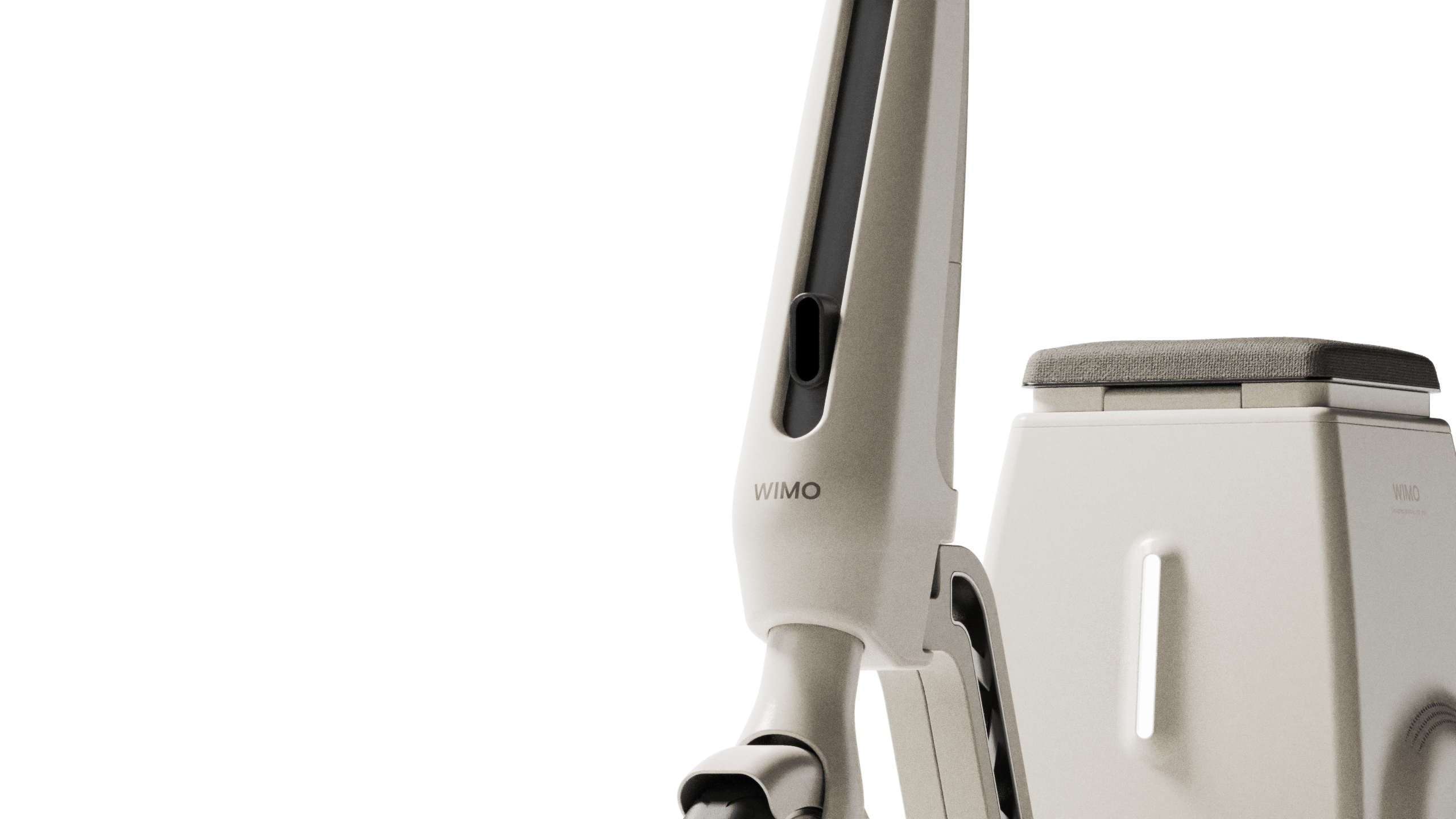WIMO: Designed to Move With You
- Niwwrd

- Jul 21
- 2 min read
Mobility products for the elderly often feel like one-size-fits-all answers to complex, personal needs. They're built for function, not flexibility. They solve part of the problem, not the whole experience.

WIMO, designed by Geonwoo Kang, does better. It understands that real life doesn’t split neatly into indoor or outdoor, walking or riding, carrying or resting. It brings all of it together without forcing the user to compromise.
Move, Walk, Pause. All in One.
WIMO starts as a mobility scooter. Acceleration is handled by two simple buttons on the front handle right for forward, left for reverse. Pressure adjusts the speed, and releasing either brings it to a stop. No screen taps. No overthinking. Just direct control.
A digital display shows battery level, speed, and mode scooter or walker.
When walking feels better than riding, WIMO adapts. With a switch, it shifts into walker mode, giving stability to users who need support on foot. It becomes a walking aid, a carrier, and a resting point—all at once.
The Rear Unit: A Smart Follower, Not Dead Weight
At the back is WIMO’s most surprising feature a detachable cargo robot. Docked, it acts as a tail light. Detached, it becomes a self-driving follower. It moves naturally behind the user, no pushing or pulling required.
It also doubles as a chair and a storage unit. Stop to rest? Flip it into a seat. Shopping at a market? Pack it up. It’s quiet, reliable help without feeling like baggage.
Designed With Real Life in Mind
WIMO doesn’t feel clinical. It doesn’t look like a device made in a lab. It looks like something built around human behaviour. You move, it follows. You slow down, it adjusts. You need a break, it’s already there.
Every part of it is clean and intentional. Nothing extra. Nothing decorative. Just what’s needed to keep a person moving with less friction, more control, and a bit more ease.
NIWWRD’s Take
WIMO is what assistive design should look like simple, thoughtful, and honest. It doesn’t try to reinvent the idea of mobility. It refines it.
Geonwoo Kang hasn’t made a scooter. He’s made a system. A way for people to keep going without feeling like they’re being carried. And in design, that’s everything.






































Comments